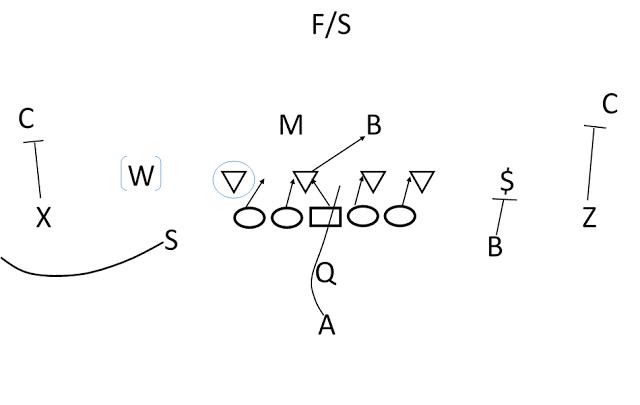The Basics of the Zone Read Offense
I would like to talk about running the basic zone read play and how it can be advanced with many different tag options. In fact, many teams run some form of zone read option play as a part of their offense. We have found, though, that just running the basic version of this is not enough to be successful.
Defenses have caught up and are now playing games that force the read or decision by the QB that they want, thus giving them the advantage. Running the same play many different ways using a few simple variations can give a defensive coordinator headaches and will create seams that end up in big plays.
Let’s start by addressing the basics of the play:
The read is a triple option play that can be run out of many different personnel and formations, but we will keep it simple and work out of a 10 personnel spread, or a 2×2 set. Here, we’re simply reading the end of the line or (EMOLS) opposite of the play call.
- The RB is the first option on the play and his aiming point is the play side leg of the guard and is looking to run A-GAP to A-GAP.
- The QB is the second option and he is reading the EMOLS. If the QB gets a pull, read his eyes and then go to secondary read or the alley player. This read determines if the QB throws the bubble or keeps the ball himself.
- The slot receiver is the third option. He runs a bubble route to stretch the defense horizontally and make the secondary read easier for the QB.
- The key to the play is the backside tackle and he must block the B-GAP. He cannot leave two rushers off the edge.
The next phase of this style of play is to add in simple changes or tags such as kick, lead, give, pop, stop, and lock. These tags make the exact same play in the offensive’s mind, but look like several completely different plays to the defense.
How useful was this post?
Click on a star to rate it!
Average rating 3.3 / 5. Vote count: 25
No votes so far! Be the first to rate this post.




